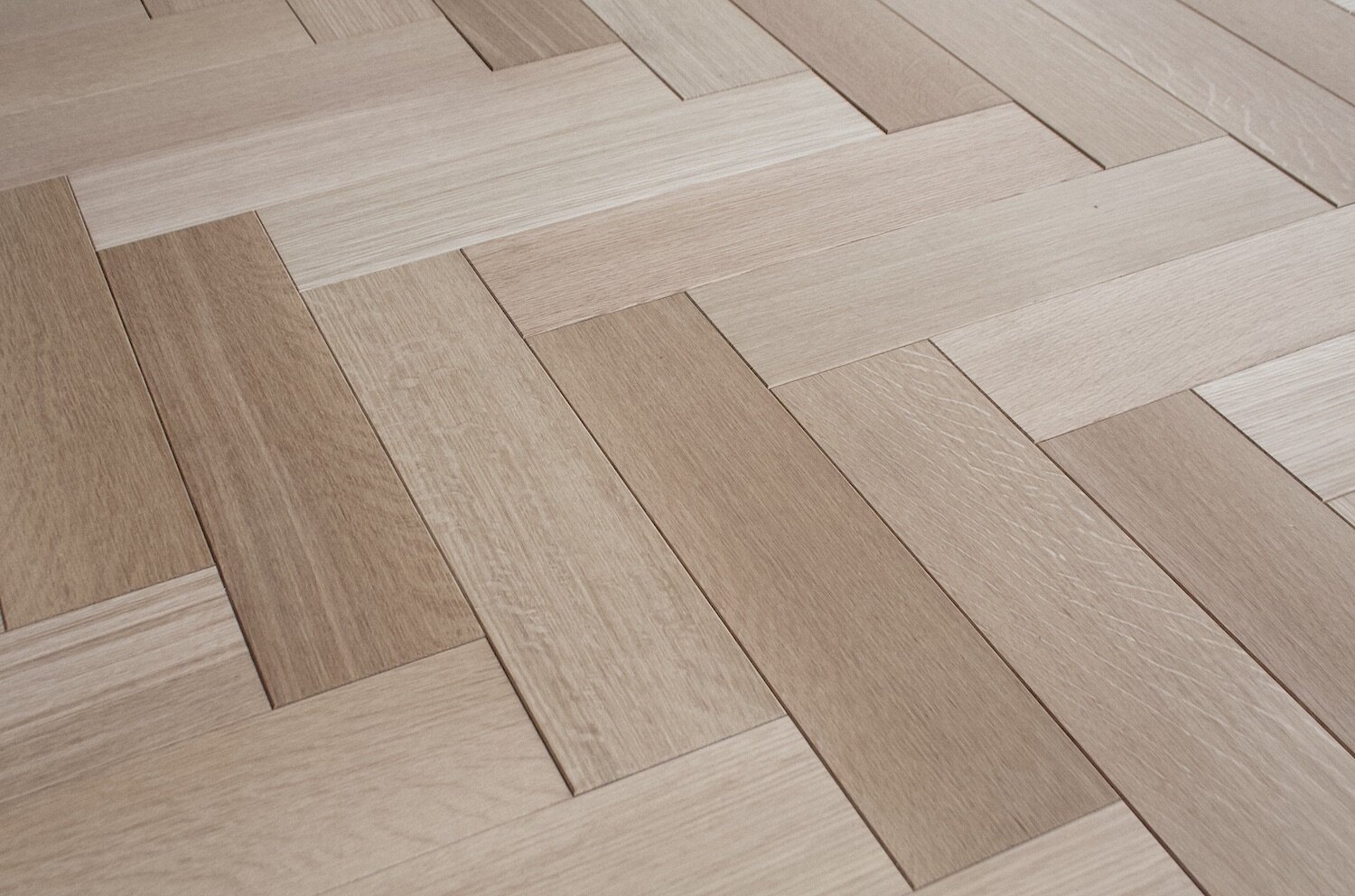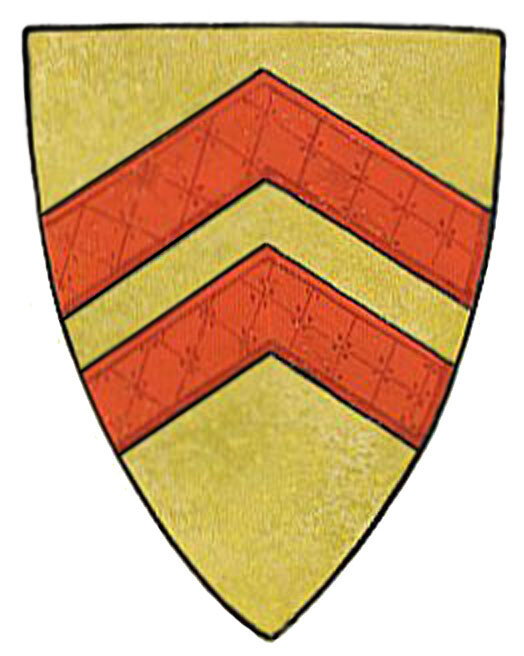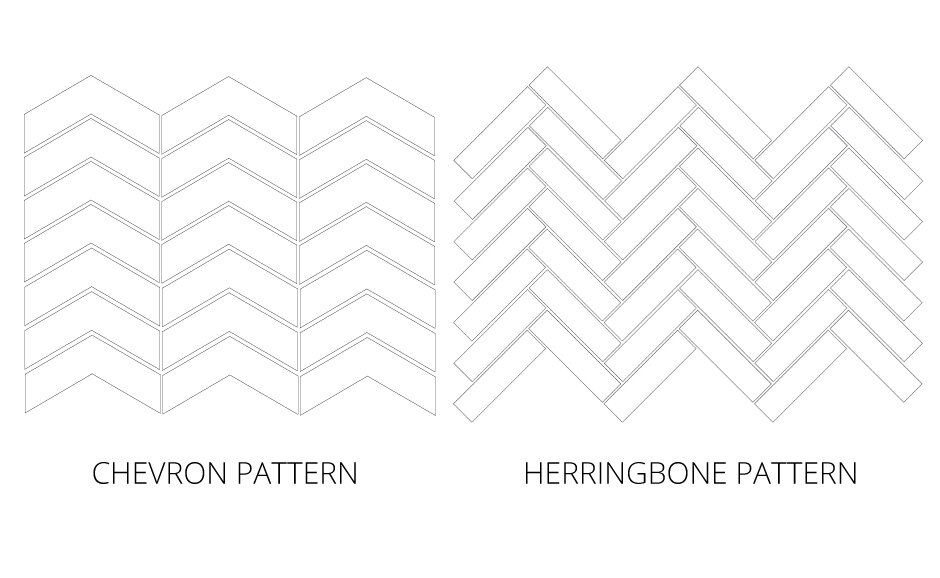Chevron & Herringbone: History of These Popular Parquet Wood Flooring Patterns
A Brief History of Parquet Patterns: From Roads and Jewelry to Flooring and Fabrics
Herringbone pattern with Legacy White Oak hardwood flooring. Photo courtesy of Anthology Woods
The herringbone pattern reflects the bone structure of a herring’s skeleton, arranged in a “v” pattern.
Roman brick road construction featuring the herringbone pattern. This was the first documented application of this pattern.
The herringbone pattern can be seen at the dome of the Cathedral of Florence. Image Source: Travel Notes & Beyond
The Arms of John FitzRobert, signatory to Magna Carta, 1215, shows a chevron pattern.
Francis I Gallery at the Chateau de Fontainebleau, showing a wooden herringbone floor. Image Source: Flickr
The difference between Herringbone and Chevron flooring patterns. Image source: Remodelista
The chevron pattern gives modern, geometric effect in a room.
In recent years, chevron and herringbone patterned wood flooring has become extremely popular, and for good reason. These geometric patterns create visual interest within a space and offer a luxurious European feel. But where do these patterns come from? Both have curious stories that span the architectural, textile design and art worlds.
History of the Herringbone Pattern
Let’s start with the herringbone pattern, named for the resemblance to the bone structure of the herring fish skeleton, which dates back to the Ancient Roman Empire. Roman road builders discovered that by laying out bricks in a V-shaped pattern on a bed of gravel, they could construct a more stable road. This type of masonry was known as opus spicatum, latin for “spiked work,” and was even used by Filippo Brunelleschi for the dome of the Cathedral of Florence (Santa Maria del Fiore).
To construct the roads, they would first lay a base of gravel and then interlay the bricks in the pattern. This approach would help absorb the compression of traffic on the roads, thus reducing the maintenance requirements over time. Even today you can walk these same streets!
Other ancient civilizations also used this pattern, including the Egyptians, who employed the design mostly for jewelry of the elite. The pattern shows up as a horsehair cloth found in Ireland, dating to somewhere between 750 and 600 BCE. It was also found in indigenous North American basketry.
It wasn’t until the 16th century that the herringbone pattern was used as parquet flooring. In French, “parquetry” means “small compartment,” and refers to the way small wooden pieces were cut and fitted into geometric patterns. Both herringbone and chevron patterns became very popular throughout the 1600s in France, symbolizing status and elegance. One of the first examples of wooden herringbone flooring can be seen at the Francis I Gallery at the Chateau de Fontainebleau, which was installed in 1539.
In addition to architecture, the herringbone pattern spread to textile design and is still a popular pattern for fabrics, and menswear in particular.
History of the Chevron Pattern
Now the chevron design has its own history beginning in Medieval heraldry, Ancient Greek pottery and textiles. The word “chevron” first appeared in English in the 14th century from the Vulgur Latin word caprio, meaning “rafters,” referring to the pattern’s resemblance of two roof beams.
Chevrons also became a way of signifying a certain rank in the military and police force in the Commonwealth nations and the United States. The number of chevrons and the way they were arranged would delineate rank, and often be displayed on the arm of the uniforms.
The Reemergence of Parquet Wood Flooring
Parquet flooring remained popular through the 17th and 18th centuries, and spread to England and North America in the 1930s, until synthetic fabric carpet was manufactured and available at a much cheaper price. Many of these beautiful parquet floors were hidden under carpet until the 1980s, when the trend to unearth and again celebrate these intricate floors resurfaced. Today, parquet flooring patterns are back in style, with chevron and herringbone patterns leading the way.
The Difference Between Chevron and Herringbone Patterns
While both patterns make for a stunning parquet design, they do have their differences. While herringbone pieces are rectangular and cut at a 90 degree angle, chevrons are cut at a 45 degree angle at the end and fitted together at a point, creating a zigzag pattern. Because of the angular cut, the chevron pattern often results in a higher priced flooring.
Chevron patterns end up creating a more modern and geometric feel, while herringbone can give a more traditional and heritage effect in a space. Choose either and you will surely have a timeless hardwood floor that adds warmth and character.
Installing and Maintaining Herringbone & Chevron Parquet Wood Flooring
Installing chevron and herringbone flooring can be a time-consuming process. Each piece must be laid out and fitted with precision, making sure that the design stays in alignment within the room. Usually the planks are glued to a wood or concrete subfloor, and then carefully placed to fit snugly together. If you’re feeling up to it, you can learn how to do this yourself, but hiring a professional is a safe way to ensure that you’ll get a precise end-product.
Like regular hardwood flooring, parquet flooring will provide lasting beauty for decades if properly maintained. To keep it looking its best, make sure to clean up any spills and moisture as they occur and sweep or mop regularly. Make sure to protect your floor by placing pads on furniture and lay down rugs in high-traffic zones.
We suggest using a pre-finished, pre-cut product that is ready-to-install. Most of our flooring products can be pre-cut into chevron and herringbone pieces for your parquet flooring project.
Our Left Coast White Oak, Legacy Oak and Heritage Oak all offer a beautiful look for parquet flooring. The Zane Grey, Fletcher or Oxley finishes offer a European “fumed” look for an antique and classic feel when paired with a herringbone pattern. Our hardwood flooring comes in a variety of widths and is offered as solid or engineered with a tongue and groove profile and micro-bevel.
Please reach out to us or fill out our sample request form if you have a project in mind. We will be happy to assist you!








